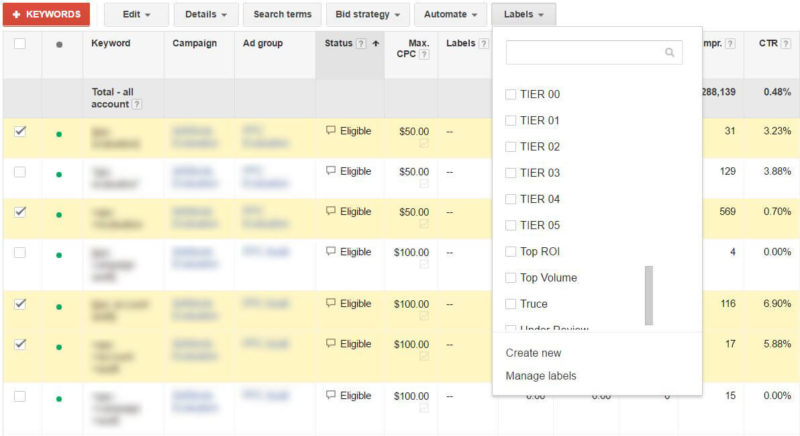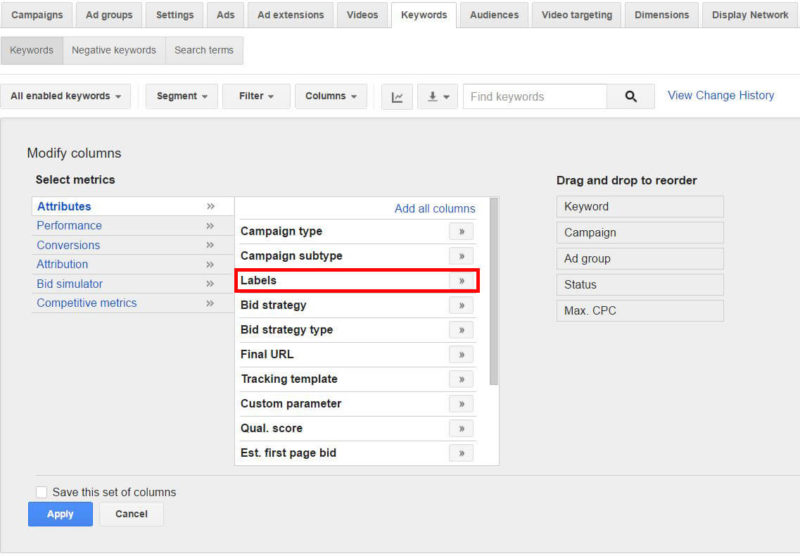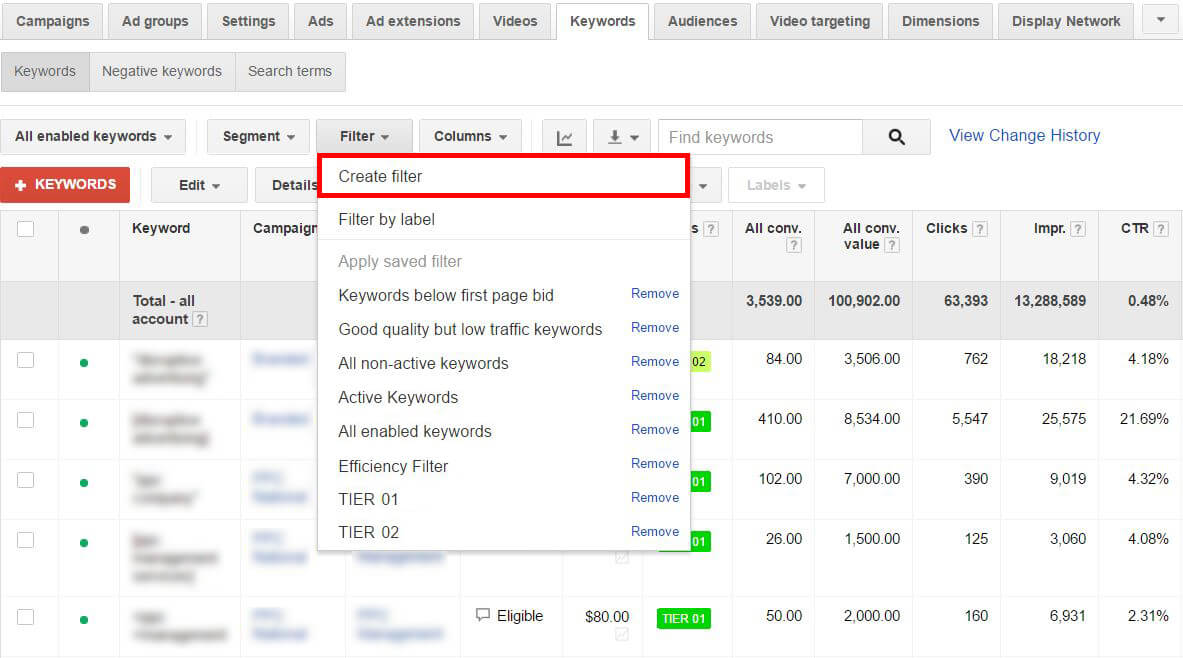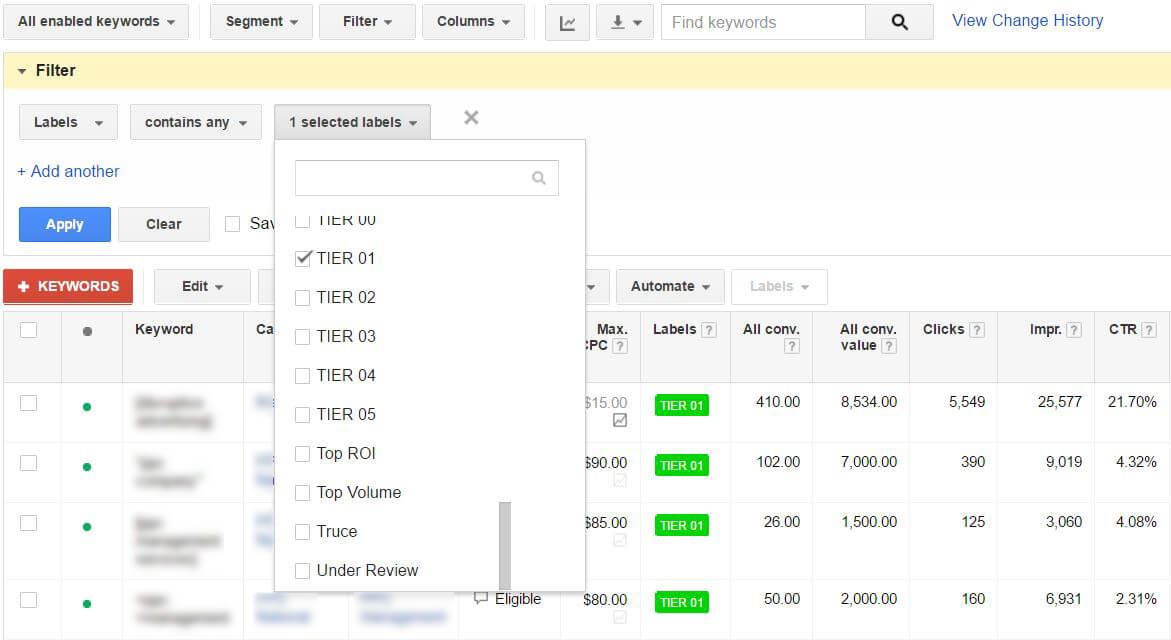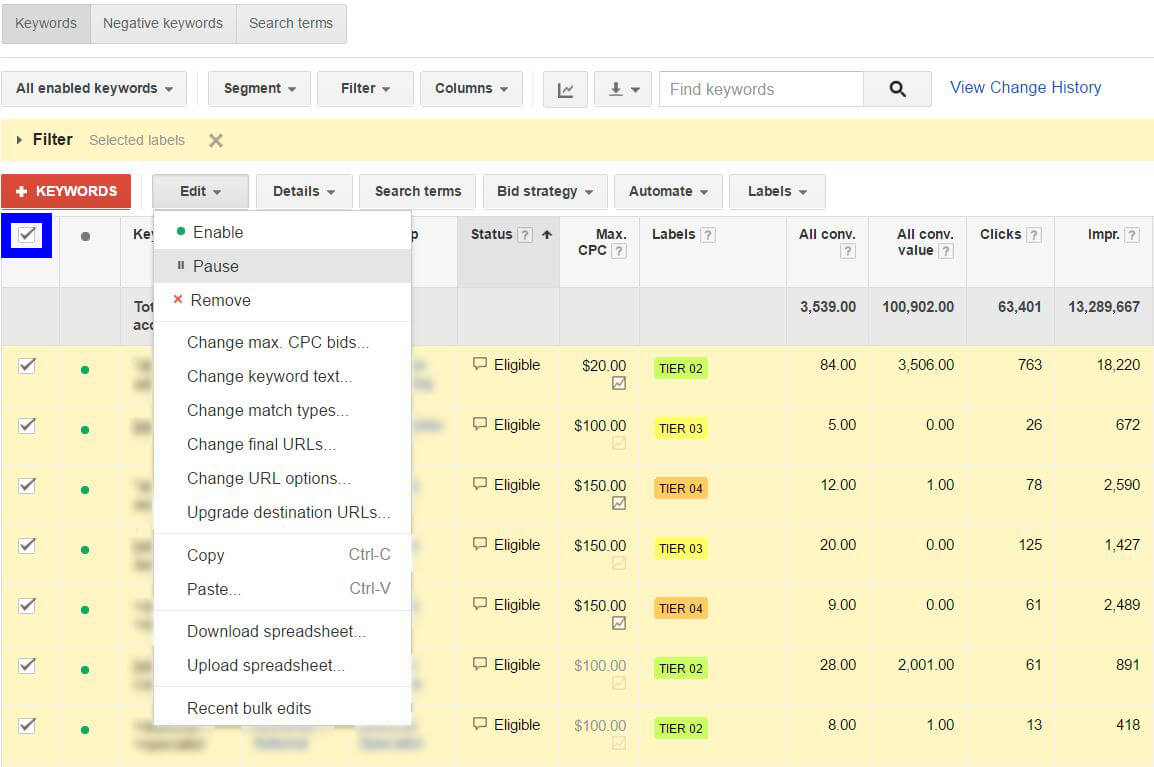Keyword tiering: A systematic way to juggle your AdWords priorities
Columnist Jacob Baadsgaard explains how assigning paid search keywords into different tiers based on performance allows search marketers to quickly make adjustments that can have a huge impact on their business.

Ever feel like AdWords is one giant juggling act? You cut your cost per click, only to watch your conversion rate drop. You increase lead volume, but those leads don’t turn into sales. You finally boost sales, but now your cost per click is unprofitably high…
When does the madness stop?
With all of these apparently conflicting priorities, it can be easy to drop the ball a few times. Or, worse still, you might feel like AdWords isn’t worth the effort, throw your hands in the air and quit.
However, there is a way to juggle all of your marketing goals — a way to balance clicks, conversions, sales and return on investment (ROI).
The secret to this juggling act is… keyword tiering.
Keyword tiering
The idea behind “keyword tiering” (coining a new term here, I guess) is fairly simple: you categorize your AdWords keywords into different tiers based on the results they generate. Then, as your business needs change, all you have to do is turn tiers on and off to meet your goals.
So, if leads are more important than sales today, all you have to do is turn on a few more tiers. If profitability is more important than sales volume tomorrow, turn off a few tiers.
Once you have effective keyword tiers in place, you can instantly adapt to the needs of your company. It’s a straightforward way to match your AdWords advertising to your business goals. And the good news is, it’s fairly easy to implement:
Step 1: Make sure you’re tracking the right metrics
As great as keyword tiering is, it does come with one caveat. In order to set up meaningful keyword tiers, you need to know which keywords are producing which results.
If you’re optimizing for leads, you need to be tracking leads. If you’re optimizing for sales, you need to be tracking sales. If you’re optimizing for ROI, you need to be tracking revenue. Depending on which metrics you’re tracking, that may mean you need to implement conversion tracking on your site or ensure that your CRM is tracking sales at the keyword level.
Unfortunately, only 29 percent of AdWords advertisers are even tracking conversions effectively enough to use keyword tiering. Far fewer are tracking sales and revenue at the keyword level.
If that describes your business, now is the time to fix things. A full description of how to track AdWords performance through to sales is beyond the scope of this article, but this article should help you get started.
Step 2: Define your keyword tiers
Once you are tracking all of your relevant metrics and have keyword data for a couple of sales cycles, you can define your keyword tiers. How you define your tiers will depend on your specific business and marketing goals, but it’s often easiest to start with four basic tiers.
For example, if you are using AdWords to drive leads for your business, you might set up your tiers as follows:
Tier 1: Highly profitable keywords
Tier 1 keywords are your all-stars. They have a proven track record of producing profitable sales — in fact, there are very few reasons why you should ever turn these keywords off.
These keywords should always get budget priority and should never have their impressions limited by budget. If a Tier 1 keyword isn’t profitable above a certain average ad rank, it’s okay to lose impressions to ad rank, but never let these keywords lose impressions to budget limitations.
Remember, Tier 1 keywords are always profitable, so if you aren’t bidding on these keywords, you are losing money.
Tier 2: Break-even to slightly profitable keywords
Your Tier 2 keywords aren’t quite as reliable as your Tier 1 keywords. They might deliver hit-and-miss leads or mildly profitable sales, but you can’t count on these keywords to always deliver.
There are a few different categories of keywords that can end up in Tier 2:
- Promising keywords. These keywords look like they’ll be winners, but you don’t have enough data yet to be certain. For example, you may have a few profitable sales from these keywords, but you’ve also only had a few conversions, so it’s too early to tell.
- “Swingin’ for the fences” keywords. Some keywords aren’t particularly profitable most of the time, but every so often they deliver that insanely good lead or sale that makes it all worthwhile.
- Reliably average. You’ve got plenty of data on these keywords, but you can’t seem to make them produce at a Tier 1 level. However, you can count on them to be somewhat profitable.
The good news is, you can often turn a Tier 2 keyword into a Tier 1 keyword with a little time and effort. But until that happens, keep your Tier 2 keywords in Tier 2 — no matter how much potential you see in them.
Tier 3: Keywords with potential
Tier 3 keywords are usually more bark than bite. These are the keywords that produce a lot of interesting results (like good lead volume or putting a product in a shopping cart), but that’s as far as things typically go.
As a result, these keywords have potential, but since you haven’t really figured out how to capitalize on that potential, they aren’t the first place you should be spending your advertising budget.
However, if your business is trying to grow and you’ve already maxed impressions for Tier 1 and Tier 2, Tier 3 can usually get you in front of a lot of potential customers. All you have to do is figure out how to turn that potential into actual revenue.
Tier 4: Long-shot keywords
Sometimes, you simply need more clicks and conversions. Maybe you’ve got a sales team that is starting to lose momentum due to low lead volume. Maybe your business needs more sales to bring on potential investors — even if those sales aren’t particularly profitable.
Business is complex, and sometimes volume is more important than profitability.
Tier 4 keywords are a perfect fit for these sorts of situations. In general, Tier 4 keywords seem like a borderline lost cause (you’ve had lots of leads but no sales from these keywords). That doesn’t mean they can’t produce good results, but the odds aren’t in your favor.
In general, I prefer to leave Tier 4 keywords off most of the time, but it’s good to have them on hand for the occasional time when you really, really need to boost clicks and/or conversions.
Testing tier
Okay, so this isn’t technically a tier, but I wanted to point out that new keywords you are actively testing should not be grouped into your regular tiers. The whole point of your tests is to determine whether or not a new keyword is viable, so you can’t exactly assign new keywords into a tier until you’ve finished your test.
Step 3: Create your tiers
Of course, simply tiering your keywords in a spreadsheet somewhere doesn’t do your business a whole lot of good. To really use your tiers, you have to be able to sort your keywords in AdWords.
To do that, you need to label your keywords.
Hopefully, you’ve used labels before, but just in case this is new to you, let me show you how to label your keywords by tier. First, open your AdWords account and click on “Keywords.” Check all the boxes next to your Tier 1 keywords:
Then, click on “Labels” and check the box next to the tier you want to assign your keyword to.
If you haven’t created your tier labels yet, click “Create new” and do it now. Guess what? You just assigned all of your checked keywords to Tier 1!
Now all you have to do is repeat the same process for all of your other tiers (you can also label keywords using the AdWords editor if you want to speed things up a bit).
As a quick side note, to see which keyword is assigned to which tier, you’ll need to make sure you’ve added the “Labels” column to your Keywords report. To do that, click “Column,” click on the double arrow by “Labels,” and hit “Apply.”
Congratulations! You just set up keyword tiering! Not too bad, eh?
Step 4. Use your tiers
Now that you’ve set up your tiers, it’s time to take your AdWords juggling skills from this…
To this…
First, you’ll need to create and save a filter for each keyword tier. If you’re still on the Keywords tab, click “Filter” and “Create filter.”
Set the drop-down menus in the filter to “Labels” and “contains any.” Then, click on the last drop-down menu and choose Tier 1 (or whatever you named your tier).
Give your filter a name, make sure “Save filter” is checked, and click “Apply.”
You can now pull up all of your Tier 1 keywords simply by running your custom filter. Use this same process to create filters for your other tiers, and you should be good to go.
Now that you have your tiers set up, the next time your boss says, “We need to cut our AdWords budget by 50 percent this month,” all you have to do is run your Tier 3 and Tier 4 filters, check the box to select all, and click “Edit” and “Pause.”
In no time flat, you’ve cut ad spend to all of your poorly performing keywords. You might still have to make some adjustments to get to that 50 percent budget cut, but you know that you’re spending that limited budget where it matters most.
This tactic might seem fairly straightforward, but the ability to quickly maximize AdWords performance in any given situation can have a huge impact on your business.
Just to show you how this works in real life, here’s what happened when we set up keyword tiering for a lead gen client last year:
In just three months, their cost per conversion dropped by 62 percent. To make things even better, this benefit filtered through to their cost per sale and tripled the profitability of their AdWords account!
Conclusion
If you set it up right, keyword tiering can allow you to juggle priorities in your AdWords account with ease. As a result, your AdWords campaigns will perform better, and your life will be easier.
Talk about a double win!
So, if you’re sick of dropping the ball on AdWords, try setting up keyword tiering. You might not end up in Cirque du Soleil, but life will certainly be easier!
Contributing authors are invited to create content for Search Engine Land and are chosen for their expertise and contribution to the search community. Our contributors work under the oversight of the editorial staff and contributions are checked for quality and relevance to our readers. The opinions they express are their own.
Related stories
New on Search Engine Land


